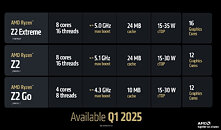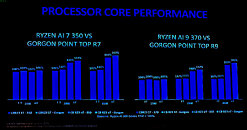MediaTek Unveils New Flagship Dimensity 9400+ Mobile Platform; with Enhanced AI Performance
MediaTek today announced the Dimensity 9400+ SoC, the latest addition to MediaTek's Dimensity flagship chipset family. Providing exceptional Generative and agentic AI capabilities as well as other performance enhancements, the Dimensity 9400+ supports the latest Large Language Models (LLM) while sustaining a super power-efficient design. The Dimensity 9400+ features an All Big Core design, integrating one Arm Cortex-X925 core operating up to 3.73 GHz, combined with 3x Cortex-X4 and 4x Cortex-A720 cores. This powerful configuration accelerates single and multithreaded performance for top-tier Android UX experiences.
"The MediaTek Dimensity 9400+ will make it easier to deliver innovative, personalized AI experiences on-device, combined with enhanced overall performance to ensure your device can handle all tasks with ease," said JC Hsu, Corporate Senior Vice President at MediaTek. "We are working closely with developers and manufacturers to continue building a robust ecosystem of AI applications and other features that will bring a number of speed and privacy benefits to consumers."
"The MediaTek Dimensity 9400+ will make it easier to deliver innovative, personalized AI experiences on-device, combined with enhanced overall performance to ensure your device can handle all tasks with ease," said JC Hsu, Corporate Senior Vice President at MediaTek. "We are working closely with developers and manufacturers to continue building a robust ecosystem of AI applications and other features that will bring a number of speed and privacy benefits to consumers."






















































































